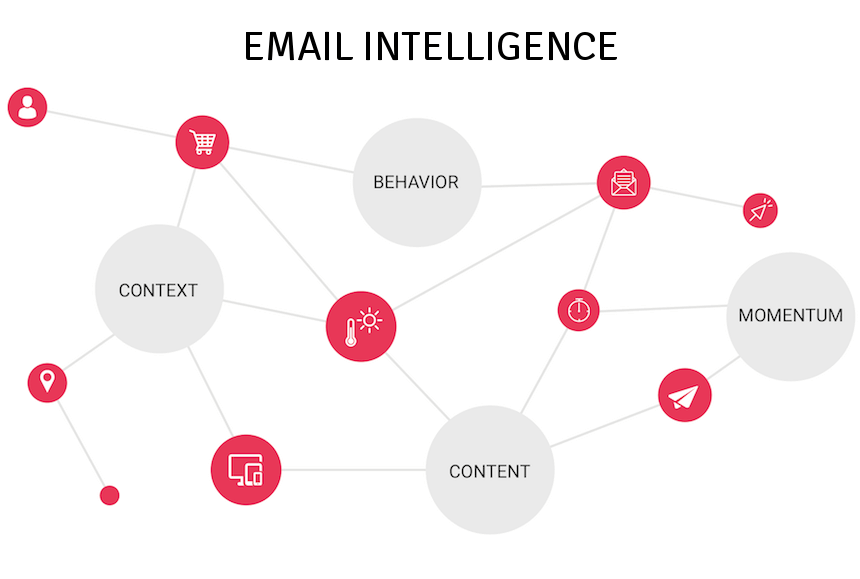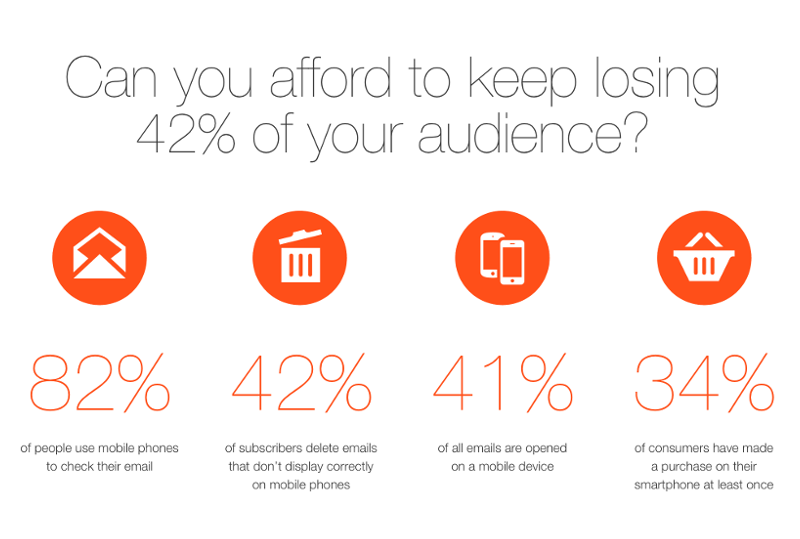So marketers have been personalizing their email marketing campaigns. In fact, 66% of them believe their personalization efforts are “very good” or “excellent”, when just 48% use behavior-based data and only 16% of them deliver real-time and behavior-based content (Source: “The Contextual Marketing Imperative” by Forester) .
The trouble with personalization is that this word has been used so much within the email marketing community that no one really knows what it means anymore. Some might consider ‘Hello {firstname}’ as personalization for example while, to me, it’s not. Personalization goes way beyond that, it’s all about moving from batch & blast emails to one-to-one personal customer experience.
Here comes email intelligence. Email intelligence is a concept that relies on behavioral and contextual data to increase each subscriber’s engagement by adapting the content and the sending time of each email. Now let me detail the four components of the model.

Context
Context is the environment surrounding the subscriber when he receives, opens or interacts with the email. It can be the device used to open the email, the recipient’s location or the weather at this location and at this precise moment. With email intelligence, marketers can adapt the content of their emails to each recipient’s context in real-time.
Context matters, we know people don’t have the same attention span when opening on mobile vs desktop; and we know weather conditions influence their behavior so email intelligence allow marketers to display different contents based on each their context at the moment-of-open.
Behavior
Now we talked about behavior-based content a bit earlier, we actually call behavior all the actions a recipient did on the emails (opens, clicks, etc.) but also on the company’s website (page visits, purchases, etc.). Email intelligence tools track those events to get to know each subscriber’s journey across channels.
Indeed, we all have a different lifestyle and different habits. Someone might check his emails several times a day, while someone else might do it on the evenings only. Email intelligence algorithms analyze each recipient’s behavior to send each email at the best moment.
Content
So with email intelligence, content is updated in real-time depending on each recipient’s context and behavior. No more static emails. If a recipient opens an email first on mobile and then on desktop for example, he/she won’t see the same content. So basically the content of the emails change, after the email was sent, to be relevant at all times.
Content can be images, call to actions but also links. If you sell online but you also have a mobile app, email intelligence allows you to redirect recipients opening on mobile to your app, and the ones opening on desktop to your website for example.
Moment
Last but not least, when we talk about moment we refer to the best moment to engage each recipient based on their previous behavior. As timing is key in email marketing, email intelligence tools calculate the best unique moment to reach each subscriber’s inbox.
So when you will hit the “Send” button, emails won’t be delivered all at the same time to your entire list, but one by one, depending on each subscriber habits. Email intelligence allows marketers to kill mass emailing by sending relevant emails, at the right time, for each subscriber.
Data used to be the engineer’s playground and was for a long time considered as obscure and unintelligible. But not anymore. Email intelligence enables marketers to use data in real-time without anyone else’s help and to create unique customer experience thanks to it. This opens so much possibility that it makes me pretty confident that email intelligence really is the future of email marketing.
 Author Biography:
Author Biography:
Vincent Martinet is the CEO of Reelevant, a live email intelligence technology that aims to eradicate mass emailing. Follow Reelevant on Twitter: @Reelevantapp



